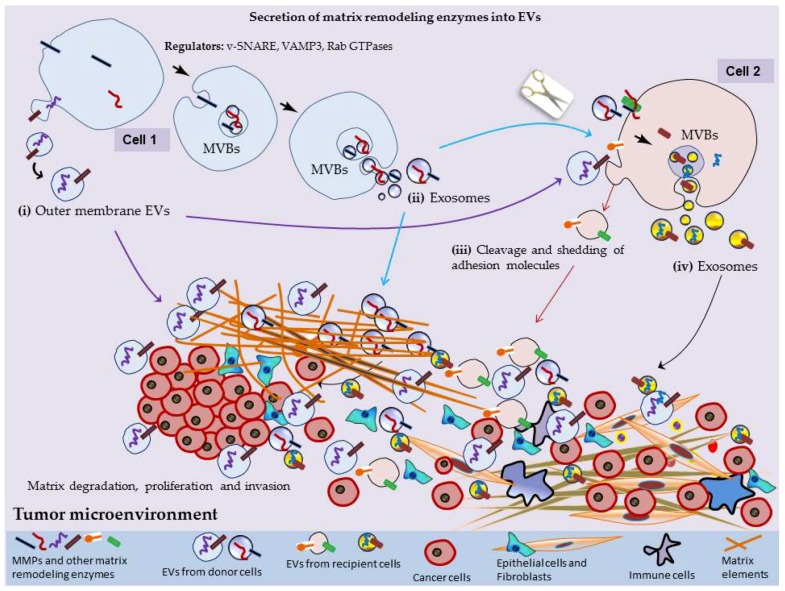Figure 1.
Schematic illustration of secretion of extracellular vesicles (EV)-associated matrix degrading enzymes, matrix remodeling and tumor progression: EVs (both outer membrane microvesicles and endosome-derived exosomes: (i) and (ii) respectively) secreted from cells carry plethora of matrix degrading enzymes on their surface or packed inside the lumen of EVs. EV-associated matrix cleaving enzymes are secreted along the entire cell periphery and can interact with neighboring cells (cell 2) whereby they cleave the surface proteins, transmembrane and adhesion molecules of recipient cells, which are either packaged into the outer membrane vesicles of recipient cells or shed directly into cells’ periphery (iii). Additionally, EVs taken up by recipient cells can induce further production of matrix metalloproteinases (MMPs) and their release via EVs of recipient cells (iv). Such activities occurring along the cell periphery play active roles in matrix degradation and facilitate cellular invasion, metastasis and preparation of tumor permissive niche. MVBs: multivesicular bodies.

